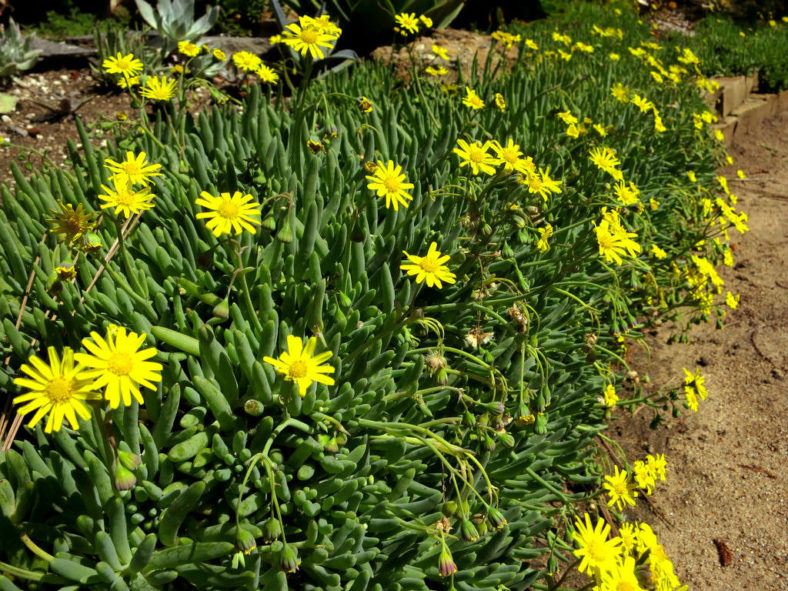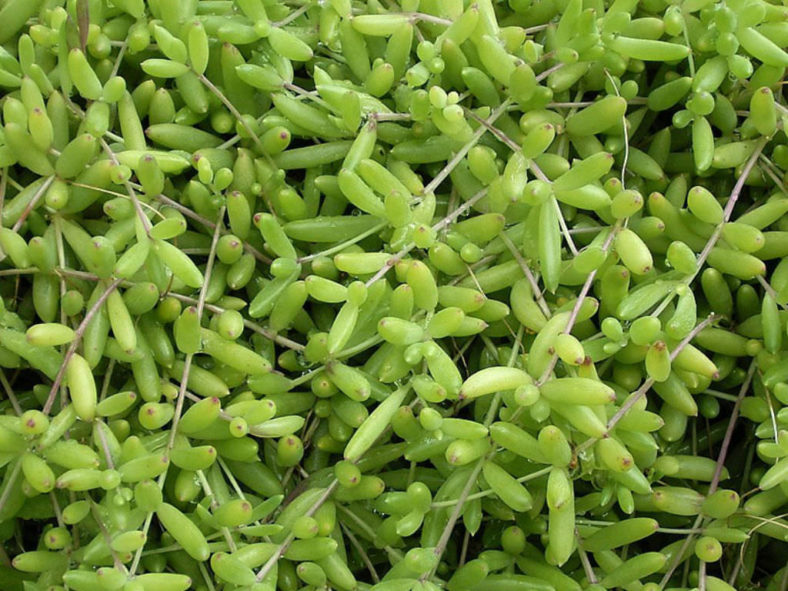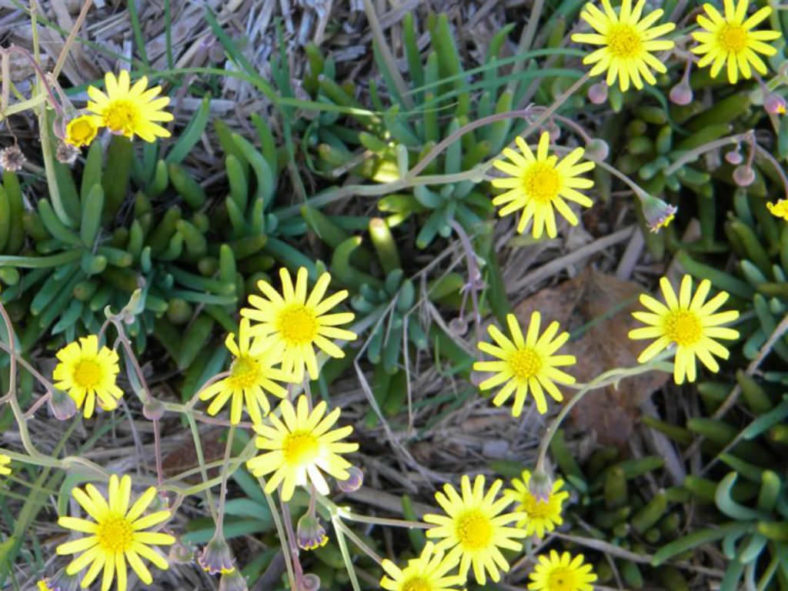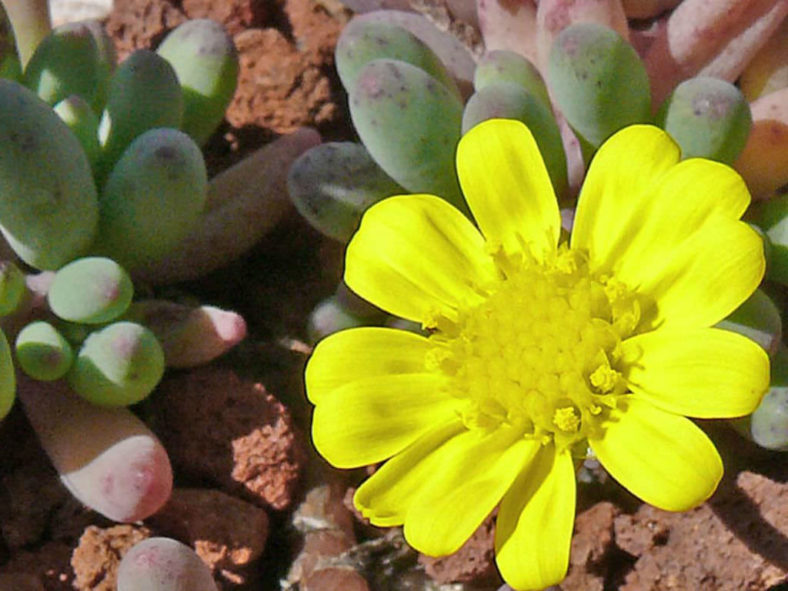Scientific Name
Othonna capensis L.H.Bailey
Common Name(s)
Little Pickles
Synonym(s)
Aster elongatus var. crassifolius, Crassothonna capensis, Othonna crassifolia
Scientific Classification
Family: Asteraceae
Subfamily: Asteroideae
Tribe: Senecioneae
Genus: Othonna
Description
Othonna capensis is a low-growing succulent with a spreading habit. It can reach a height of up to 4 inches (10 cm) and spread up to 1 foot (30 cm). The leaves are upright, arranged spirally, pickle-shaped, and can grow up to 1 inch (2.5 cm) long. They are bluish-green but can take on yellow, lavender, and red hues when stressed.
The flowers are yellow, daisy-like, about 0.5 inches (1.3 cm) in diameter. They appear from mid-spring through fall and sometimes even year-round. The flowers emerge from pea-shaped, violet-hued buds and rise up to 2 inches (5 cm) above the foliage.

Hardiness
USDA hardiness zone 8a to 10b: from 10 °F (−12.2 °C) to 50 °F (+4.4 °C).
How to Grow and Care
Othonnas fleshy leaves and daisy-like flowers make them excellent in a desert or rock garden (where hardy) or indoors as houseplants or greenhouse specimens.
Othonnas tend to be fairly hardy, but some of them, such as Othonna cacalioides, can be extremely difficult to cultivate if you do not give them the right conditions: space to develop a radicular system, better to keep them in flat pots. In summer, protect plants from direct sunlight. In the growing season, they like to be moist, fresh, and plenty of light. They do not like temperatures below 50°F (10°C).
In the warmer months, Othonnas go into their dormancy period. Stop watering them, and place them in a shaded, cooler, relatively dry area, away from direct sunlight and with good air circulation. In the fall, when nights cool down, the plants may start growing on their own, but a good soaking will help them to leaf out.
A typical succulent soil mix should be suitable for growing Othonnas, but additional drainage material would be recommended.
See more at How to Grow and Care for Othonna.
Origin
Othonna capensis is native to South Africa.
Cultivars
Links
- Back to genus Othonna
- Succupedia: Browse succulents by Scientific Name, Common Name, Genus, Family, USDA Hardiness Zone, Origin, or cacti by Genus
Photo Gallery
Click on a photo to see a larger version.



